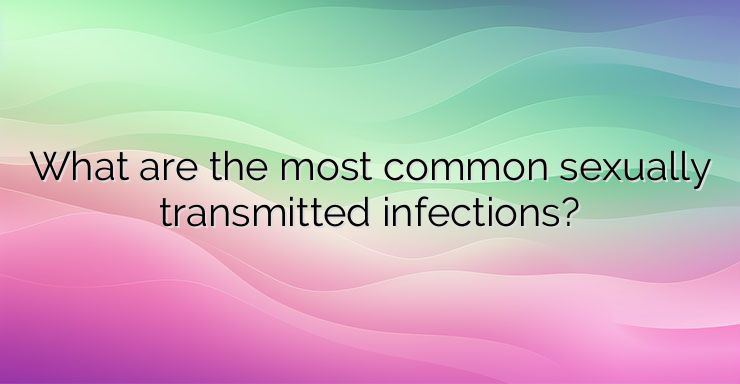Sexually transmitted infections are common among people who regularly change sexual partners and do not use protection. However, they could also meet with those with less intimate connections. Diseases occur in both sexes. 1. Human papilloma virus (HBV) Almost every sexually active person is affected by human papilloma virus at some point in life. In the US, it is the most common sexually transmitted infection. Over 40 types of human papillomavirus could be sexually transmitted. Infection occurs via vaginal, anal or oral route. Exposure through skin contact is also possible. Most types of human papillomavirus do not cause symptoms and the body manages to eliminate them on its own. Some of these could lead to genital warts or mouth and throat injuries. Others could increase the risk of cervical, penile, mouth, or throat cancer. 2. Chlamydia Chlamydia is spread primarily through vaginal or anal sexual contact, but infection can also occur through oral contact. The most common symptoms include abnormal discharge from the vagina or penis, and pain or burning when urinating. The manifestation of these disorders is rare – only 25% of women and 50% of men have symptoms. Chlamydia is caused by bacteria and for this reason the treatment is antibiotics. After applying treatment to both partners, it is recommended to repeat the examination after one to three months. 3. Gonorrhea Gonorrhea is another common bacterial STD. Usually, this type of infection occurs together with chlamydia. The symptoms of both diseases are also similar – unusual discharge from the vagina or penis, as well as pain or burning when urinating. Symptoms occur among most men with gonorrhea, while only about 20% of women experience any discomfort. The treatment for the infection is antibiotics. 4. Syphilis Syphilis occurs in four stages. In the first stage, the main symptom is the appearance of a wound, which can look different. The second stage begins with a rash on the body, followed by sores in the mouth, vagina or anus. In the third – latent stage, no symptoms are observed. It can last for years or until the end of the patient’s life. Only about 15% of untreated syphilis patients reach the final late stage. Damage to various organs and nerves is observed in it. Syphilis is treated with antibiotics, and the earlier it is started, the less drugs will be needed to control the disease. 5. Herpes Herpes virus – HSV-1 and HSV-2, can cause genital herpes. The more common causative agent of the two strains is HSV-2. The main symptom is the appearance of painful blisters around the penis, vagina or anus. In cases where the blisters are in the vagina or anus, the patient may not feel pain and may not notice them. Blisters may not appear. Herpes is easily transmitted through skin contact.Its transmission is possible even during protected intimate contact. 6. Trichomoniasis Trichomoniasis occurs more often in women. Only about 30% of patients have symptoms, such as itching, burning or sore genitals. The appearance of discharge with a different color and an unpleasant smell is also possible. Trichomoniasis is treated with antibiotics. Retesting within three months of treatment is important, even if your partner has also been treated. 7. HIV/AIDS Human immunodeficiency virus causes AIDS. It can pass through body fluids such as blood, semen, vaginal secretions and breast milk. HIV is transmitted sexually or through blood. HIV is not transmitted through saliva or kissing. Symptoms of infection are unclear. They can resemble the flu, with muscle aches, fatigue or a low-grade fever. Weight loss and diarrhea may occur. Not everyone infected with HIV develops AIDS. Acquired immunodeficiency syndrome occurs only in immunocompromised patients. Source: www.webmd.com


Leave a Reply